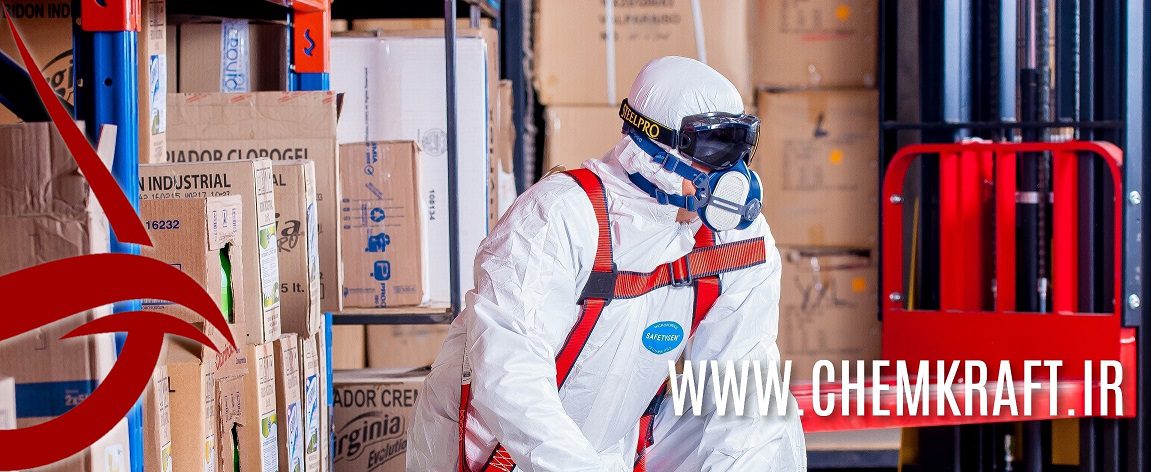UNDERSTANDING THE RESPIRATORY HAZARDS AND SAFETY MEASURES
CAUSTIC SODA WAREHOUSES, health dangers
Hossein Moshiri
Introduction:
Caustic Soda fumes: Caustic soda, scientifically known as sodium hydroxide (NaOH), is a highly corrosive substance widely used in various industrial applications. Handling and storing caustic soda require strict safety measures, especially in warehouses where the potential for exposure exists. This article explores the respiratory hazards associated with caustic soda in warehouses and emphasizes the importance of safety protocols to protect workers and ensure a secure working environment.
Caustic Soda Properties and Uses:
Caustic soda is a strong alkaline substance known for its corrosive nature. It is commonly used in the production of chemicals, textiles, soaps, and various industrial processes. While it is a crucial component in many manufacturing processes, its corrosive properties pose significant health risks, particularly when inhaled.
Caustic Soda fumes
Respiratory Hazards:
- Irritation of Respiratory Tract:Inhaling caustic soda fumes or dust can lead to irritation of the respiratory tract. Symptoms may include coughing, throat irritation, and shortness of breath. The corrosive nature of caustic soda can cause immediate damage to the delicate mucous membranes in the nose, throat, and lungs.
- Pulmonary Edema:Prolonged exposure to caustic soda can result in pulmonary edema, a condition characterized by the accumulation of fluid in the lungs. This can lead to severe breathing difficulties and can be life-threatening if not addressed promptly.
- Eye and Nasal Irritation:Caustic soda exposure can also irritate the eyes and nasal passages, causing redness, tearing, and discomfort. In severe cases, exposure may lead to chemical burns on the cornea.
- Systemic Effects:Beyond respiratory effects, caustic soda can be absorbed into the bloodstream through inhalation, potentially causing systemic effects such as nausea, vomiting, and damage to internal organs.
See also Global Market Trends for Caustic Soda
Safety Measures in Caustic Soda Warehouses:
Personal Protective Equipment (PPE):
Workers in caustic soda warehouses must wear appropriate PPE, including respiratory protection, to prevent inhalation of fumes or dust. Respirators with suitable filters designed for caustic soda exposure are essential.
Caustic Soda fumes
Ventilation Systems:
Adequate ventilation is crucial to minimize the concentration of airborne caustic soda particles. Warehouses should be equipped with effective ventilation systems that ensure the continuous flow of fresh air and reduce the risk of respiratory exposure.
Training and Education:
Workers handling caustic soda should receive thorough training on the properties of the substance, potential hazards, and safe handling procedures. Education on the proper use of PPE and emergency response protocols is paramount.
Emergency Response Plans:
Warehouses should have well-defined emergency response plans in place. This includes procedures for dealing with accidental spills, leaks, or releases of caustic soda. Quick and effective response can minimize the extent of exposure and prevent further harm.
Regular Monitoring:
Regular air quality monitoring within the warehouse is essential to assess the concentration of caustic soda particles in the air. This helps in identifying potential exposure risks and implementing corrective measures.
Caustic Soda fumes
Conclusion:
Working in a caustic soda warehouse requires strict adherence to safety protocols to mitigate respiratory hazards and protect the well-being of workers. The corrosive nature of caustic soda emphasizes the need for comprehensive safety measures, including the use of proper PPE, effective ventilation systems, and robust training programs.
By prioritizing safety and implementing proactive measures, warehouses can create a secure working environment where the risks associated with caustic soda are minimized. Ongoing education, regular monitoring, and a commitment to emergency preparedness are fundamental components of maintaining a safe workplace in industries where caustic soda is handled and stored.
Hossein Moshiri
WA +989124311007
Source: https://chemkraft.ir/en/caustic-soda-fumes/
Comments
Post a Comment